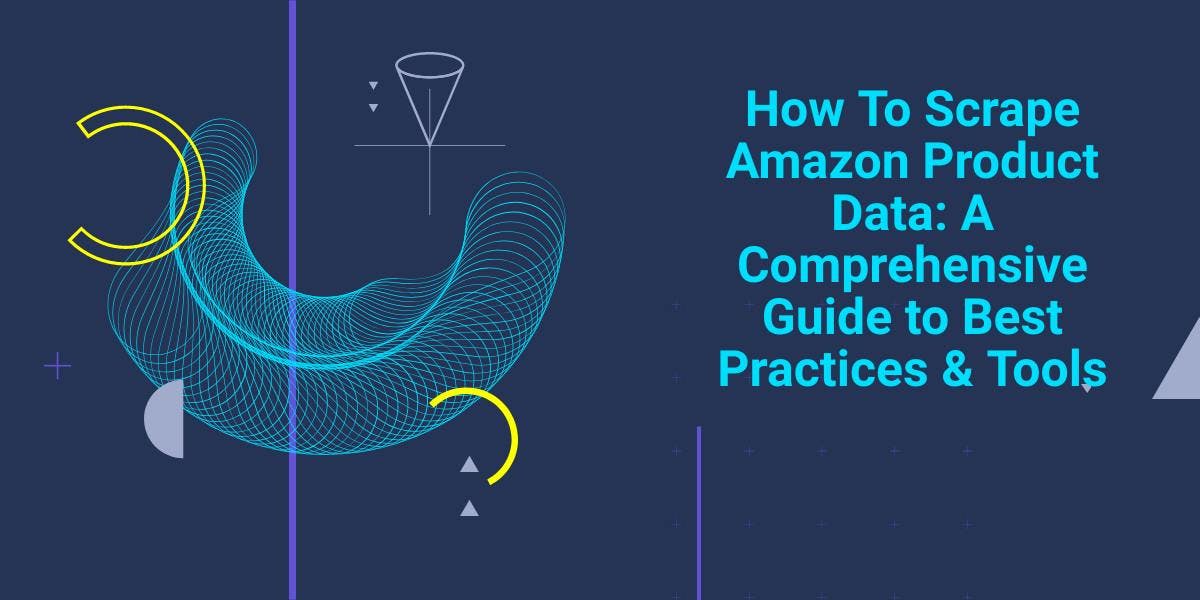5 Amazing Fetch Alternative Js You Need To Know About
WebscrapingAPI on Oct 20 2022
Making HTTP requests in Java is not as easy. That’s because you have to choose among many libraries. Knowing which library to choose is difficult because there are subtle differences between them.
Now, why are libraries needed?
Libraries are key in any programming language because they help coders to develop Js applications easily. Also, libraries contain prewritten code, which ends up saving a lot of time for coders. Integration also becomes easy with these libraries.
Now that you know about Js libraries, you must also know about Fetch Js. Fetch Js is one of the most versatile ways of making ajax calls. But, Fetch Js is not the only option. There are many Fetch alternative Js that, in some instances, are better.
We’ll tell you all about the Fetch alternative Js and the OG Fetch Js in this blog. It is going to be an amazing read, which will be packed with loads of information. So, if you’re ready, let’s begin.
What is Fetch Js All About?
In website development, retrieving data from a server is crucial. Without it, you can’t see the web pages as you see them today.
Whenever you visit a web page, your browser sends a request to the HTTP server. An HTTP server is a place where all the data about the website is saved. The HTTP server returns the request by sending over the data. The data is usually the scripts, images and other aspects of a web page.
The above method is a more traditional way of pulling data from an HTTP server. But, is this method effective? It really isn’t. That’s because even if you make a small change on a web page, you have to reload it and the server will again send all the data.
What it does is it ends up wasting resources, bandwidth and time. So, what’s the solution?
Fetch Js. Fetch Js changes the game by helping users make live changes on the website. They don’t have to reload a page to see if the changes are made. This means that the web page doesn’t request the entire page’s data from the HTTP server.
Fetch Js does exactly what we highlighted in the above paragraph. Not just small, many major websites like Amazon, YouTube and others use Fetch Js. It saves them a ton of time and money, thus helping them focus on creating better services and products.
Pros:
- One of the most versatile options.
- Lightweight.
- Integrated with modern browsers.
- Easy to make asynchronous requests.
- Handles responses more effectively.
- It is simpler and cleaner.
Cons:
- A bit outdated, as it was launched in 2015.
- Lacks backward compatibility, meaning it doesn’t work on old browsers.
5 Fetch Alternative Js You Need to Know About
If you’re somewhat familiar with Fetch now, it is time to know about 5 Fetch alternative Js. We feel it is crucial to know about the alternatives because a good decision can only be made when you’re provided with more than one option.
These are the 5 Fetch alternative Js:
1. XMLHttpRequest
2. Axios
3. Got
4. SuperAgent
5. Requestify
Follow along to know about each of them in more detail.
1. XMLHttpRequest
XMLHttpRequest is also used to retrieve only the required data from the server. It is one of the oldest.
When it was introduced, everything changed because coders realized how this technology can benefit websites. Every other alternative we’re going to talk about next has XMLHttpRequest as the base. If this hadn’t been developed, we would not be using Fetch Js today.
Pros:
- Many XHR requests can run at the same time.
- Saves time, as requests run at the same time.
- Can still be used by slow machines with old browsers.
Cons:
- It is outdated, as it was launched in 2006.
- It lacks some features.
- It is not as lightweight as its modern counterparts.
2. Axios
Axios is another alternative to Fetch. Many coders prefer it because it brings together the key benefits of Fetch & XMLHttpRequest. At times, Fetch can cause problems. The main reason for that is when someone uses an old browser but also wants speed and versatility.
It is a promise-based HTTP client. Promise is an object in Js which tells whether an asynchronous request was completed or not. There are three states for a Promise- Pending, Fulfilled, and Rejected.
Pending is when the request is in its initial stage. When you see pending, you won’t know whether a request will be returned or not.
Next is Fulfilled. It is the second and final step. If the request is fulfilled, you know that your request from the HTTP server was successful.
Then is Rejected. If the HTTP server doesn’t return the required data, you see this.
These three states easily tell the coder about the request.
Pros:
- It supports Promise.
- Works well on old and new browsers.
- Combines the best aspects of Fetch & XMLHttpRequest.
- It is easy to use.
Cons:
- It can be difficult for a beginner to understand the different features of Axios.
- You must install it separately as it doesn’t come built into the browser.
3. Got
With over 19 million downloads in a week, Got is one of the best options in this list. The reason for this is that it is a powerful request library that is easier to use than other alternatives. It offers HTTP 2 support, which no one except SuperAgent offers.
It also comes with Promise. We talked about Promises in detail in the previous point. In case of failure to get data, it retries to get it from the HTTP server. It is an uncommon feature that most alternatives don’t offer.
Also, there are advanced timeouts when the request takes too long to process. Overall, Got is a package in itself because there are not many options that offer so much.
Pros:
- Supports Promises.
- RFC Compliant Caching.
- HTTP 2 support.
- Easy to use.
Cons:
- Unlike Fetch, it has to be installed separately.
- It does not parse JSON by default.
4. SuperAgent
SuperAgent is a small-sized HTTP request library. It is its small size that helps it become flexible and easier to install on old machines. It is perfect for beginners because learning it is not too difficult.
Other than that, loads of other features and plugins are available in this SuperAgent. Although small, it surely packs a punch.
Pros:
- It is lightweight.
- It also supports Promises.
- Fairly easy to learn.
- You can write your own plugins.
- Support is available, as it is a widely used library.
Cons:
- It is not a JS native and has to be installed separately.
- It does not offer lots of functionality, as many others do.
5. Requestify
Published 6 years ago, Requestify is another HTTP library that is popular among developers. Many say that Requestify is the easiest to use. Along with being easy, it offers Promise. By now, we know that any option that offers Promise is a good option.
More than 5,000 people download Requestify weekly. So, you can know that it gets the work done.
Pros:
- Easy to use.
- Extendable HTTP client.
- It supports cache.
- It supports Promise.
- It can handle redirect URLs.
Cons:
- Good for beginners. Not so much for experienced coders.
Which Js Will You Choose?
Many Js developers have been using Fetch for the longest time. That doesn’t, in any way, mean you should choose it. But, if you are looking for an option that is lightweight, clean and simple to use, we’d suggest you go with Fetch Js.
Sure, other options are packed with features, but honestly, most developers will never use all the features. Most will use only a handful and get their tasks done effectively.
If you’re someone who isn’t concerned about tons of features, but wants the most useful and well-optimized ones, Fetch should be your go-to option. If, however, it doesn’t suit your needs, you can always make a switch.
Found this blog helpful? Share it further so more people can benefit from this information.
How can WebScrapingAPI help you?
You can tell this tool is special the moment you visit the website. We will translate it for you if you are unable to do so.

The website's strong architecture and well-considered design quickly pique your interest. However, what is there in that at all? You may be inquiring. It does provide valuable insight into the company. A business is more likely to succeed if it executes the first thing that customers notice.
At the bottom of the page, you'll find all the information you need to know about web scrapers. WebscrapingAPI is serious business, with around 100% uptime and round-the-clock monitoring. They want the entire world to know about their important choice.
Features:
- 360-degree web scraping: The Web Scraper API offers full support for all web scraping tasks and use cases, including market analysis, price monitoring, data on transportation costs, real estate, financial data, and many more.
- Getting Formatted Data Out: With just one API call, you can obtain structured JSON data tailored to your specific requirements using our custom extraction rule capabilities. The ability to move data quickly will give your company a competitive edge.
- Usage: Use JavaScript websites like a pro by clicking, scrolling, and running customized JS code on the target page while you wait for components to load in order to accurately collect data.
- Security: Automated data extraction flows can be created from compromised data to find potentially hazardous information.
- Data images: Embedding high-resolution screenshots of the pages or sections of the target website into your tools or applications is a good way to represent data in images. Raw HTML, structured JSON, and screenshots are all possible outputs from the Web Scraper API.
- Scaling for businesses: By utilizing hardware or software infrastructure, we reduce unnecessary costs. Our cloud infrastructure makes it simple to collect precise data at a large scale.
Conclusion
WebScrapingAPI prevails when compared to alternative options. Why? The tool is stuffed full. Not only densely packed, but also full of functionalities that actual users value. This platform can be very important for data management because it automates the process of extracting both structured and unstructured data from a web page.

Mass web crawling, clean code, 99.99% uptime, the newest architecture to boost performance, a variety of value-loaded plans, and the confidence of 10,000+ businesses worldwide are all provided by WebScrapingAPI.
News and updates
Stay up-to-date with the latest web scraping guides and news by subscribing to our newsletter.
We care about the protection of your data. Read our Privacy Policy.

Related articles

Explore the complexities of scraping Amazon product data with our in-depth guide. From best practices and tools like Amazon Scraper API to legal considerations, learn how to navigate challenges, bypass CAPTCHAs, and efficiently extract valuable insights.


Discover 3 ways on how to download files with Puppeteer and build a web scraper that does exactly that.


With these 11 top recommendations, you'll learn how to web scrape without getting blacklisted. There will be no more error messages!
